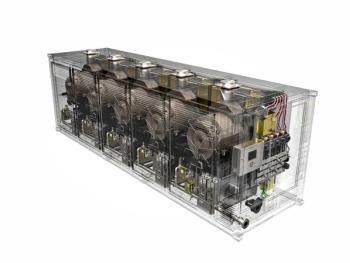
Gas Turbine Controls Retrofits -- to Buy or not to Buy?
We recently retrofitted and updated the control system of one of our older gas turbine-driven centrifugal compressor units. The experience turned out to be rather traumatic. The retrofit cost far more than anticipated, the unit was down for an extended period, and the functionality of the gas turbine (including operating load and speed range) actually became more restricted than it was with the old analog controller.
There was much complaining and griping amongst management and engineers and the justifiable question was asked: “Why did we do the controls retrofit in the first place?” The old engineering adage, “If it ain’t broke, don’t fix it,” should have been applied. But there are other reasons why a control system must sometimes be retrofitted. And equally, there are some times when it is better to continue operating with a basic but still functional control system. So here is a discussion, some reasons, and typical misconceptions as to when a machinery controls retrofit is appropriate or not.
The basic function of a compressor control system is to provide startup and shutdown sequencing, operational and process control, human machine interfacing and monitoring, and equipment safety alarms and shutdowns. Even the oldest controllers easily offer this set of minimal functionality, albeit sometimes they are slow and their operator interfaces are not very convenient.
So why would someone want to upgrade the control system? The primary reason operators change the control system is simply that it is getting old, requires frequent repairs and causes costly downtime. In fact, for many users, the number one reason for unplanned shutdowns is aging controls. This is often associated with parts obsolescence, especially for old analog-type controllers. Frequent shutdowns result in significant downtime and operational losses. Also, most controller-related, forced outages cause a plant blowdown and, thus, result in added greenhouse gas emissions.
Other less obvious reasons are that younger engineers and technician operators are often not familiar with older electrical components and systems and have only been trained on modern digital systems. Sometimes the modern digital control system cannot even communicate with older sensors, alarms, and switches. This is especially true when the operator aims to improve long-term data trending using historical data loggers for improved condition-based maintenance practices.
Modern control systems often directly interface with the manufacturer’s centralized expert support staff to help diagnose operational issues and faults before they become a significant problem. Equipment upgrades, such as upgrading the diffusion-flame combustion system on an older gas turbine to a modern, low-emission, lean-premix combustion system, or the replacement of a wet-seal system on a compressor with a dry gas seals system, often require a controls retrofit or upgrade. The older controllers usually cannot handle the more complex startup, shutdown, tuning, and air management sequencing required for the operation of lean, premixed, low-NOx combustors.
In some locations, continuous emissions monitoring is required to meet government regulations. Although third party, free-standing systems can be used for this task, it is often easier to have an integrated machine controller with continuous emissions monitoring built in.
Modern control systems come with advanced load sharing and process control algorithms that can significantly enhance machinery and plant performance. For example, an advanced surge control system can significantly improve a compressor station’s efficiency since it avoids unnecessary or excessive recycling. Similarly, optimized load sharing between multiple units in a compressor station has been demonstrated to increase station efficiency by several percentage points.
But one should not forget that the controls retrofit can be costly and cause significant downtime. In many cases, the retrofit will take at least two to three weeks of complete machinery shutdown since most of the instrumentation, alarms, switches, and SCADA communication must be rewired or replaced. To integrate older analog instruments, valves, and sensors into modern digital controllers, the controls retrofit may also require substantial replacement of non-controller related equipment in a station. And when the control system is changed, operator training on the new system is required which can also be costly and cause operational interruptions.
So, although the adage of “if it ain’t broke don’t fix it” still holds, there are often other compelling reasons to upgrade a gas turbine control system. In our case, upgrading the turbine was necessary primarily due to instrumentation obsolescence and the need for improved surge control. Nonetheless, it is always worthwhile to carefully evaluate all the pros and cons of the retrofit before making a decision.
Newsletter
Power your knowledge with the latest in turbine technology, engineering advances, and energy solutions—subscribe to Turbomachinery International today.




